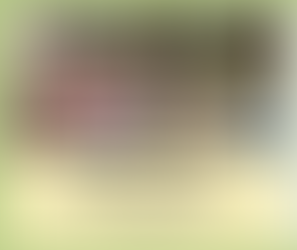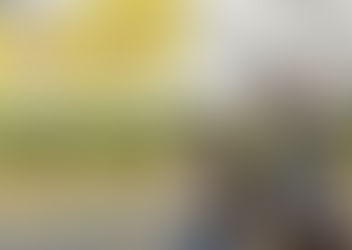What Are You Doing?
- Pollinator Project RV

- Aug 30, 2020
- 4 min read
Hoverfly on coyote mint, Anise swallowtail on echinacea,
Long horn bee on sunflower, Tarweed seedhead
Photos by Kristina Lefever
by Kristina Lefever
The world has changed a lot since our last issue of The Pollinator Times. Too many months have gone by with no newsletter .... even though we have been busy buzzing like a-you-know-what. But also distracted, discombobulated, overwhelmed, and stuck.
With so many important issues in the world right now, it's hard to know what to do - federal, state, or local, it all needs fixing -- on so many fronts. With the urgent need to DO something, many of you are! COVID, racial injustice, climate change, homelessness, voter rights - all such big issues, and all are needing solutions right now.
Just as importantly, although perhaps not as obviously so, is protecting pollinators. We hope that among the many things you are doing, providing for pollinators is part of the mix in some way. Because everything we do, no matter how small, is making a difference. Perhaps you are creating or expanding a garden space, or spending time in a garden, or learning about pollinators, or just immersing yourself in the beauty and biodiversity that we are blessed with here in this part of the country now called the Rogue Valley. We can only imagine how incredible this place must have been prior to the 1800's, and we gratefully acknowledge and honor the original peoples - Takelma, Shasta, and the many other recognized and unrecognized tribes - who lived and knew these lands in ways that are beyond our modern-day comprehension. So consider: how can we, in our own time, honor both these peoples and this place, and help restore and heal the land?
For those of you creating and enhancing your gardens and landscapes - do your plans include native plants? Because native plants are so important for our native pollinators - did you know that some bee, butterfly and moth species are 'specialists', meaning they depend on certain flowers and/or plants to survive and procreate? The monarch and milkweed relationship is well-known, but there are others. Not only are native pollinators part of the food chain themselves, they are critical to the regeneration of many of our beautiful native plant species - from madrones to huckleberries to camas - that also provide food and habitat for birds and other wildlife. And people too!
We have learned so much from Dr. Doug Tallamy, who has been sharing his message about the importance of native plants for years. Here is just one of his many videos (not to mention books) on the subject. Please keep in mind he is from Delaware, so many of these species he references will not be found here in Southern Oregon.
In addition, many native bees are better pollinators than honey bees for many of our food plants (fruit trees and bushes, blueberries, tomatoes, squash, alliums, and more). And I encourage you to let your lettuce, herbs, brassicas, and onions go to flower, as they will attract and support many other pollinators, such as hoverflies, beetles, and tiny wasps -- and also provide you with free seed! Many of these seeds are also bird food -- finches love lettuce seed!
So, let's assume that outdoor living is the new norm for years to come. How can we create gardens and landscapes that meet human aesthetics as well as the needs of insects, birds, lizards, and other wildlife that share this planet we call home? Because, yes - we can create spaces that are beautiful for humans and are inviting to pollinator‘s at the same time! There is a plethora of annuals, perennials, shrubs, grasses, and trees that bloom at different times throughout the year, serve as host plants for these insects, and also provide interest in different seasons. And, if they are also drought tolerant and deer resistant, they are winners for sure. Perhaps not surprisingly, many native plants meet all of those requirements, although we will be the first to admit that there are plenty of non-native plants that are excellent additions to a pollinator landscape. Sunflowers, lavenders, salvias, and zinnias are just a few of our non-native favorites.
Every gardener has a unique landscape - different soil, moisture, elevation, sun exposure, etc. Beginning there and then looking for what is appropriate is the first piece of the puzzle. For instance, at The Pollination Place in Phoenix, it doesn't look like it would be easy to have a garden there: facing west, the sun starts baking the DG (decomposed granite) soil early in the morning, and heat radiates off the sidewalk. So of course we wanted to try growing native species that thrive in that type of environment ..... and we are! The plants have grown so fast, and either have bloomed or still are blooming like crazy. And the best part is that, with only a few exceptions, weeks go by without watering - even though this is their first summer, and yes, even during those too many 100+ degree days.
The majority of these native plants are "straight" species, meaning they have not been hybridized, and so may be unfamiliar to many gardeners. This garden has certainly been a learning experience for us, but we feel we are achieving our goals: to both educate and encourage people to learn about, and of course, plant native plants; increase the seed supply of these plants (we are collecting); propagate some of the plants to sell and share; help create a larger demand for these plants so the nursery industry will increase their supply; and support the growers of these plants who are leading the way. And, last but perhaps first - increase the supply of flowers, plants, leaves, and seeds that will support a diverse array of pollinators, other insects, and birds at 312 N. Main St., Phoenix!
We hope you will enjoy the videos we’ve been making, and will peruse the list of native plants that we are so excited to see growing there. We invite you to come by and pick up a hardcopy of the list and take a self-guided tour. We will soon have ‘plant cards’ available with more information about each plant - stay tuned!
And please check out our Resources page for more information about pollinators and plantings!
Have questions or suggestions? Drop us a line at pollinatorprojectroguevalley@gmail.com




































Excellent post!